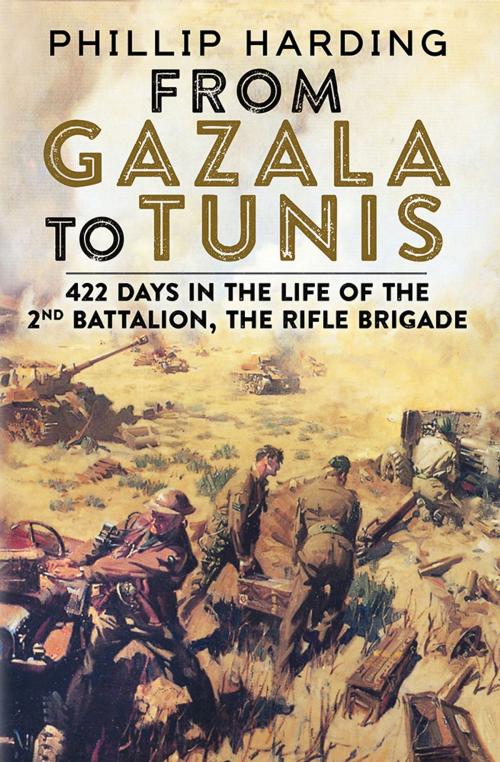From Gazala to Tunis
422 Days in the Life of the 2nd Battalion, The Rifle Brigade
Nonfiction, History, Military, Pictorial, Strategy, World War II| Author: | Phillip Harding | ISBN: | 1230001999235 |
| Publisher: | Fonthill Media | Publication: | November 10, 2017 |
| Imprint: | Language: | English |
| Author: | Phillip Harding |
| ISBN: | 1230001999235 |
| Publisher: | Fonthill Media |
| Publication: | November 10, 2017 |
| Imprint: | |
| Language: | English |
From Gazala to Tunisia: 422 Days in the Life of the 2nd Battalion, The Rifle Brigade is the story of the riflemen and their battles of Gazala to the successful end of the North African campaign. These 422 days include the bitter battles of Gazala, the conflict around the Cauldron, the loss of Tobruk before the forced withdrawal with the remainder of the Eighth Army, along the Mediterranean Coast, and finally digging in at Alamein. Due to their involvement in the battles around the Alamein Line, the Mine Task Force opened gaps in the Axis defences which allowed British armour to overwhelm the Germans. The riflemen of the 2nd Battalion took on the enemy in the battles at the Mareth Line and Wadi Akirit in Tunisia before joining the First Army in the final conflicts that brought the North African campaign to a successful conclusion. It was this battalion that marched two miles into enemy lines to take occupation of the Snipe position, feeling the full brunt of Rommel’s counterattack, before marching back 36 hours later. It has been said that Alamein was the turning point of the war and that Snipe was the turning point of Alamein.
THE AUTHOR
Phillip Harding was born in 1959 and is the youngest son of a rifleman who fought in the Second World War. Harding researched into his family’s history and collected information on his father’s war career and service years. Encouraged by Sir Christopher Wallace of the Green Jackets Museum, Harding compiled his first book to give recognition to the brave men and officers of the 2nd Battalion.
From Gazala to Tunisia: 422 Days in the Life of the 2nd Battalion, The Rifle Brigade is the story of the riflemen and their battles of Gazala to the successful end of the North African campaign. These 422 days include the bitter battles of Gazala, the conflict around the Cauldron, the loss of Tobruk before the forced withdrawal with the remainder of the Eighth Army, along the Mediterranean Coast, and finally digging in at Alamein. Due to their involvement in the battles around the Alamein Line, the Mine Task Force opened gaps in the Axis defences which allowed British armour to overwhelm the Germans. The riflemen of the 2nd Battalion took on the enemy in the battles at the Mareth Line and Wadi Akirit in Tunisia before joining the First Army in the final conflicts that brought the North African campaign to a successful conclusion. It was this battalion that marched two miles into enemy lines to take occupation of the Snipe position, feeling the full brunt of Rommel’s counterattack, before marching back 36 hours later. It has been said that Alamein was the turning point of the war and that Snipe was the turning point of Alamein.
THE AUTHOR
Phillip Harding was born in 1959 and is the youngest son of a rifleman who fought in the Second World War. Harding researched into his family’s history and collected information on his father’s war career and service years. Encouraged by Sir Christopher Wallace of the Green Jackets Museum, Harding compiled his first book to give recognition to the brave men and officers of the 2nd Battalion.















